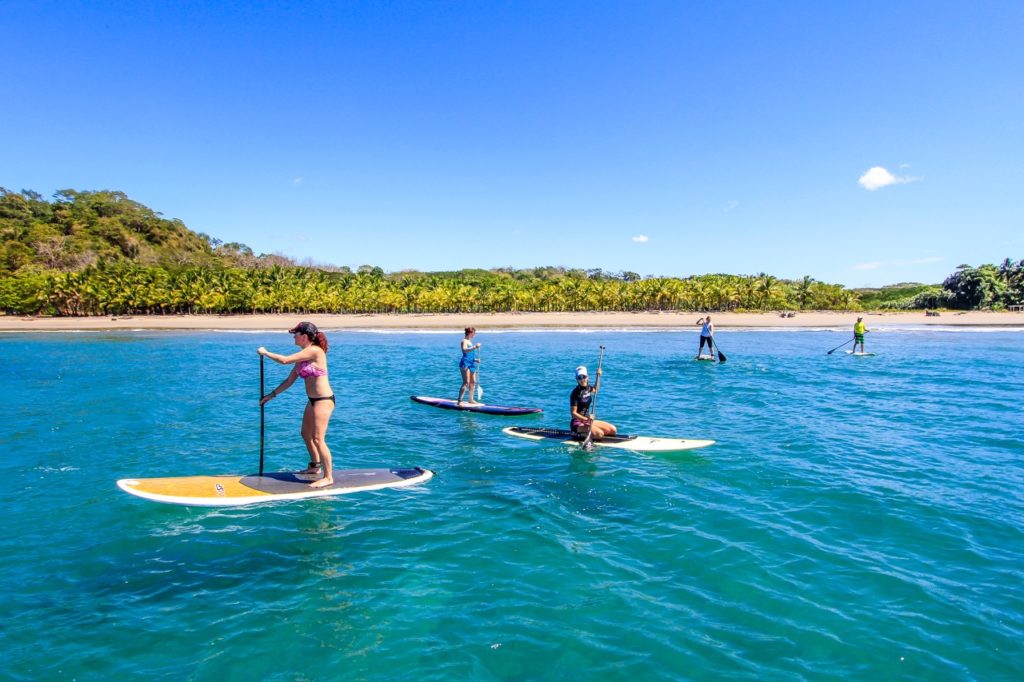 Stand Up Paddle (SUP) boarding is an activity that draws on the strength, flexibility and endurance that you practice in yoga, but the on-the-water sensations are completely different. Here are some tips to enhance your first SUP experience on the water.
Stand Up Paddle (SUP) boarding is an activity that draws on the strength, flexibility and endurance that you practice in yoga, but the on-the-water sensations are completely different. Here are some tips to enhance your first SUP experience on the water.
Your Safety on the Board and in the Water
Even if you are not a great swimmer, you always have the board next to you as a floatation device. You wear an ankle leash that connects you to the board so if you do fall in the water the board will stay close to you. If you drop the paddle, you can move the board with your hands if needed. The first few times you go out, start on flat water with minimal current. In your first lesson the SUP instructor will go over safety and will be with or near you while on the water.
Stability on the SUP Board
Stability on the board obviously this takes some practice even for well balanced yogis. The first time you stand you may notice the board tips from one side to the other. Stand up on your knees keeping them hip-width apart near the center of the board. When you feel balanced come to your feet and reposition them as you need in small increments (perhaps only an inch). Bend your knees slightly, relax and stay loose in your hips. Use your paddle for balance by pushing the blade forward or backward in the water to keep from falling. Try to keep your paddle always in the water.
Position of Feet
Stand in the middle of your SUP board with knees bent and looking forward. Take a moment to pause and sense your environment, the fluidity of your foundation and balance. If you go too far forward you start to sink the front or nose and if you stand too far back it starts to drag the tail and slow you down. Maintain a wide, centered stance. As balance improves you can move your feet around the board a little more. When you feel you are losing your balance and that you will fall, fall into the water and not on the board pushing the board away from you.
How to Paddle
With both hands on the paddle, your top hand directly above your bottom hand, reach forward with your blade to one side towards the nose of the board. Your blade is angled forward. Put the blade in the water close to the board and pull the paddle towards you. Feel that you are pulling the board itself forward in the water. You do not need to extend your stroke past your legs. This makes the blade more stable in the water and improves the release of the blade as you pull it out of the water. If you pull or stroke too far back this can prevent a smooth release. Paddle a few times on one side and then switch to the other side to keep your board going straight or in the desired direction.
Turning on the Board
When you are learning to turn the board, take your time and paddle several times on one side of the board or paddle backwards. A much faster but more advanced technique is to put your weight towards the back of the board. Then stroke with the paddle to pivot the board from one direction to another. When you are in the fore and aft position you can practice this by putting weight on your back leg. You may need to lean on the paddle to enhance moving. A beneficial practice is to spin the board 360 degrees in direction and then change to the other direction.
Join Vajra Sol on retreat in Santa Teresa, Costa Rica and try out SUPing out the beautiful Pacific! Learn more HERE!